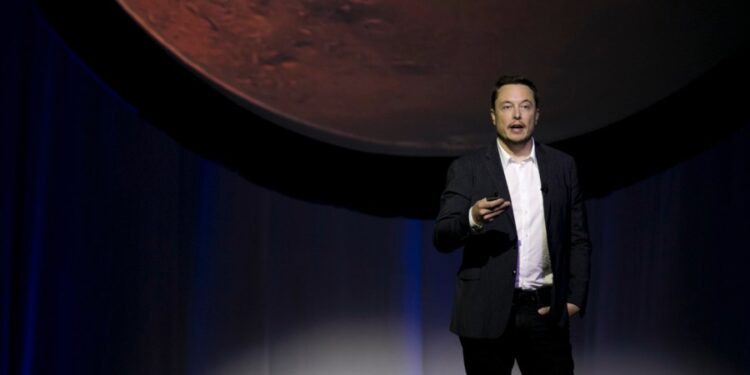
In September of 1962, John F. Kennedy famously told Americans, “We choose to go to the Moon.” Former President Donald Trump recently echoed this sentiment with “Elon, get those rocket ships going because we want to reach Mars.”
Trump has often talked about reaching Mars. We find his new challenge to be a continuation of the fruitful space initiatives of his first administration, complementary to the bold return to the moon under Artemis.
Still, many people question whether sending crew-capable spacecraft to Mars is achievable before Jan. 20, 2029. The fundamental physics says, “Yes.”
There would be two launch windows for an efficient Mars mission during a second Trump administration — in 2026 and 2028. The remaining requirements are technical and political.
Betting against Musk is a fool’s game. His electric cars hold their own against far more expensive Porsches and Ferraris and the Tesla Model Y was the world’s best-selling car.
When SpaceX first launched a Falcon 9 rocket in 2010, America held a big, fat zero percent of the global commercial launch market today. Today, most payloads are launched by SpaceX, which now flies more rockets than the entire planet did in 2010.
In 2010 there were about 1,000 active satellites in orbit. Today, Musk’s Starlink constellation operates more than six times that number, more than the rest of the commercial, military and governmental world combined.
Trump’s space record is equally intimidating. No president has had a greater overall impact on U.S. space policy. Trump reestablished the National Space Council. He created the Space Force. He initiated NASA’s return to the moon under Artemis.
Under his guidance, NASA and the Department of State initiated the Artemis Accords, which aligned dozens of nations with American goals in developing space resources. His team produced a plethora of space-related executive orders and policy directives addressing everything from space cybersecurity to orbital debris management.
Musk is testing his big Starship rocket down in Texas as often as the Federal Aviation Administration will allow. He recently said that he will send several uncrewed Starships to Mars in 2026, and if all goes well, follow that with crewed flights two years later.
We have no doubt that Starships will be standing on Mars by 2029 if the government doesn’t get in Musk’s way. After several test flights, Starship is looking capable, and landing one on Mars is easier in some ways than the moon mission that NASA has contracted it for.
The Red Planet offers an atmosphere, useful for aerobraking and fuel production. This will reduce the need for pre-fueling missions inside Earth orbit. However, the returning crew will require an “in situ” fuel and oxidizer production process on Mars, which will be the biggest challenge. Perhaps our astronauts might not be back until 2030.
No worries — Starship is fully capable of delivering enough supplies to sustain and protect them from the harsh Martian environment and radiation for many years. They can spend that time doing amazing science if we only have the vision and courage to send them.
To achieve that, the second Trump administration must immediately streamline and simplify launch permit and license requirements. Musk has noted that launching each Starship requires “multiple fish licenses,” on top of FAA safety reviews. Requiring each launch to clear several hurdles is a waste of time we cannot afford in a globally competitive market.
China is ready to eat our freeze-dried astronaut lunch while we hobble ourselves. It is long past time to unburden space from what has been and adopt a pro-business, America-First attitude.
To that end, the Office of Commercial Space Transportation should be elevated out of the FAA and report directly to the Secretary of Transportation. It should be led by a business-savvy professional appointed by and accountable to the president.
Exploring Mars in no way precludes us from the priority of lunar development before China and Russia do. The tasks are complementary and our strategic economic, military and geopolitical interests dictate that we win that race against authoritarianism.
Developing the resources of the moon provides benefits for the Earth and is also complimentary with the eventual settlement of Mars. Learning to process local resources to sustain long-term habitats, grow food, avoid radiation and adapt to partial gravity are challenges faced in both locations.
Being just three days away gives the moon an initial advantage for that work while we also get on with Mars. Supporting a simple, commercially directed Starship to Mars program, with NASA as a science customer, makes that possible and affordable.
America has always been at its best facing a crisis or a challenge. When we have the will, we have always found bold leaders able to answer the clarion call. Trump and Musk are ready to go: Are we?
Greg Autry served as White House liaison to NASA in the Trump administration and is the co-author of “Red Moon Rising: How America Will Beat China on the Final Frontier.” Brett Mecum serves on the Arizona Space Commission.






